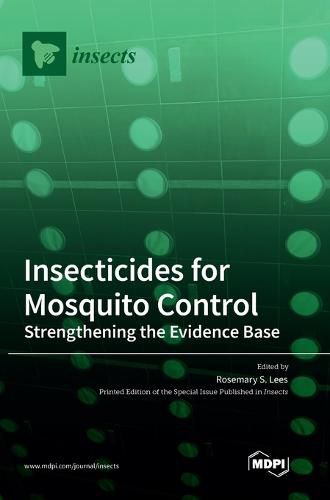Readings Newsletter
Become a Readings Member to make your shopping experience even easier.
Sign in or sign up for free!
You’re not far away from qualifying for FREE standard shipping within Australia
You’ve qualified for FREE standard shipping within Australia
The cart is loading…






This title is printed to order. This book may have been self-published. If so, we cannot guarantee the quality of the content. In the main most books will have gone through the editing process however some may not. We therefore suggest that you be aware of this before ordering this book. If in doubt check either the author or publisher’s details as we are unable to accept any returns unless they are faulty. Please contact us if you have any questions.
The eradication of vector-borne diseases is threatened by the limited range of available insecticides, leading, inevitably, to the development of resistance. This is particularly concerning for malaria control, which relies heavily on insecticide-treated nets (ITNs) and indoor residual sprays (IRS). New chemistries are being developed, and innovative deployment of insecticides may play a role in overcoming resistance, either through new types of tools or new means of distribution. A variety of novel product types and vector control strategies are under development and evaluation, which is to be celebrated, but a strong evidence base is needed to guide effective operational deployment decisions. Novel approaches should be supported by robust data collected using appropriate and validated methods to monitor efficacy, durability, and any emerging resistance. This reprint presents original research into developing and characterizing new vector control products, as well as understanding and monitoring insecticide resistance. Review articles explore the impact of insecticide resistance and offer guidance on insecticide choice in the face of pyrethroid resistance. Consensus methodologies are presented, in the form of standard operating procedures (SOPs) designed to be adopted and used to generate reproducible data that can be compared and interpreted across and between studies. It is hoped that this collection of articles offers inspiration and guidance on how consistent data can be generated to inform more effective development, evaluation, and use of new and existing vector control tools.
$9.00 standard shipping within Australia
FREE standard shipping within Australia for orders over $100.00
Express & International shipping calculated at checkout
This title is printed to order. This book may have been self-published. If so, we cannot guarantee the quality of the content. In the main most books will have gone through the editing process however some may not. We therefore suggest that you be aware of this before ordering this book. If in doubt check either the author or publisher’s details as we are unable to accept any returns unless they are faulty. Please contact us if you have any questions.
The eradication of vector-borne diseases is threatened by the limited range of available insecticides, leading, inevitably, to the development of resistance. This is particularly concerning for malaria control, which relies heavily on insecticide-treated nets (ITNs) and indoor residual sprays (IRS). New chemistries are being developed, and innovative deployment of insecticides may play a role in overcoming resistance, either through new types of tools or new means of distribution. A variety of novel product types and vector control strategies are under development and evaluation, which is to be celebrated, but a strong evidence base is needed to guide effective operational deployment decisions. Novel approaches should be supported by robust data collected using appropriate and validated methods to monitor efficacy, durability, and any emerging resistance. This reprint presents original research into developing and characterizing new vector control products, as well as understanding and monitoring insecticide resistance. Review articles explore the impact of insecticide resistance and offer guidance on insecticide choice in the face of pyrethroid resistance. Consensus methodologies are presented, in the form of standard operating procedures (SOPs) designed to be adopted and used to generate reproducible data that can be compared and interpreted across and between studies. It is hoped that this collection of articles offers inspiration and guidance on how consistent data can be generated to inform more effective development, evaluation, and use of new and existing vector control tools.